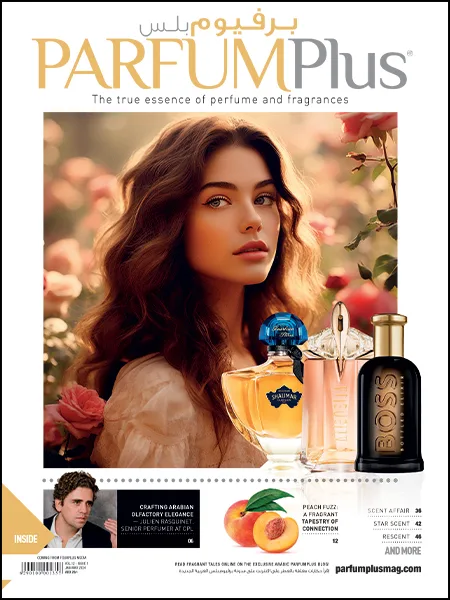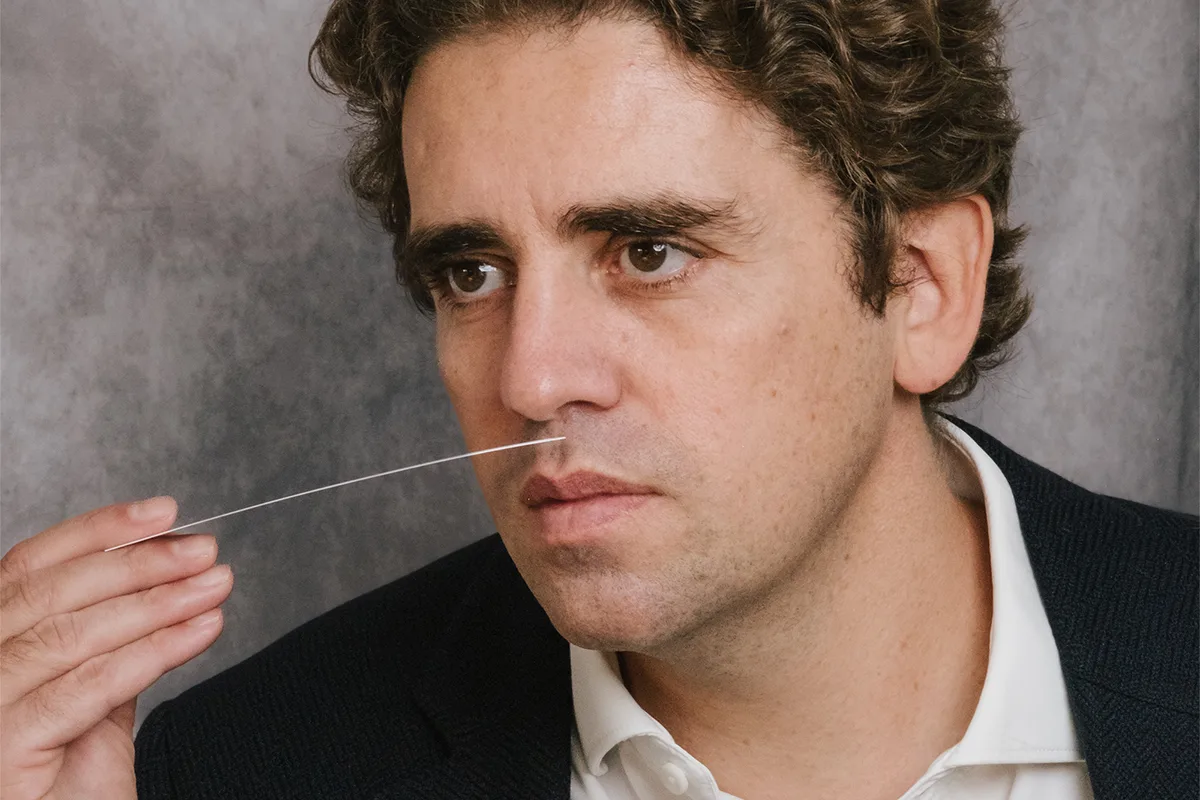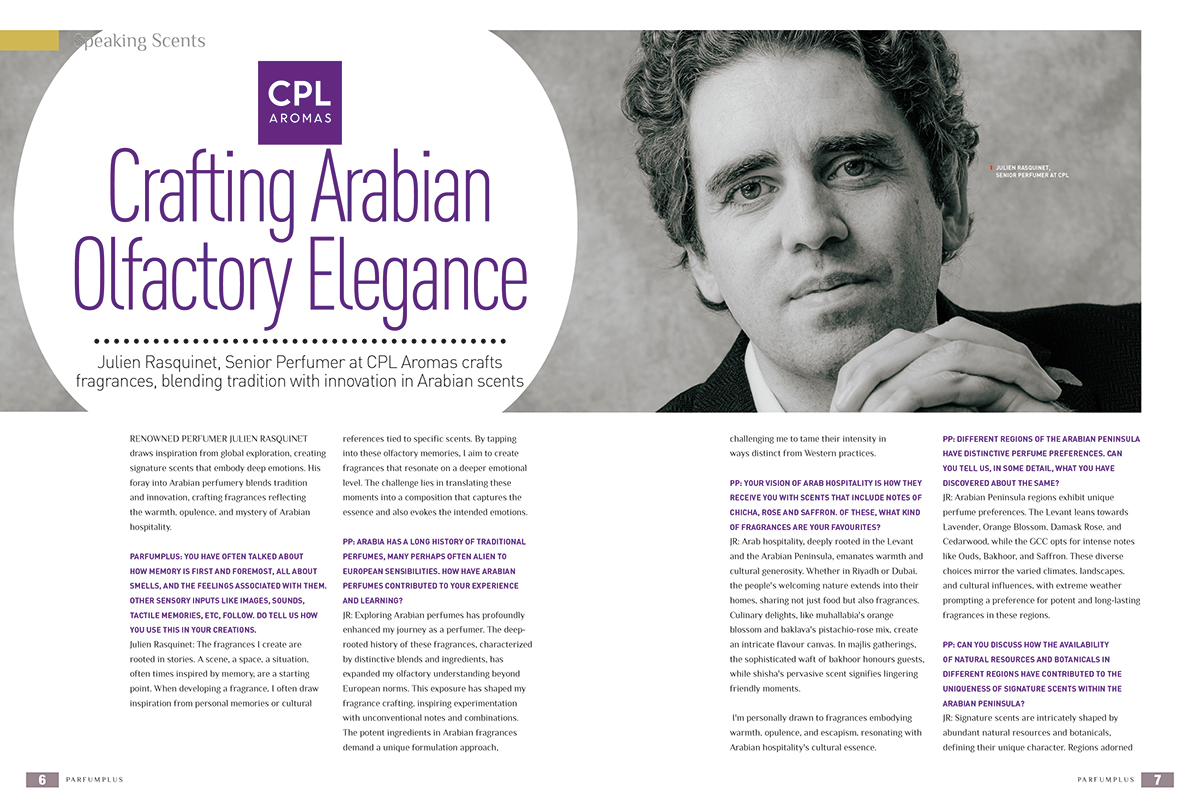Read this post in
 Arabic
Arabic

CPL Aromas: Crafting Arabian Olfactory Elegance
Julien Rasquinet crafts fragrances, blending tradition with innovation in Arabian scents
Renowned perfumer Julien Rasquinet draws inspiration from global exploration, creating signature scents that embody deep emotions. His foray into Arabian perfumery blends tradition and innovation, crafting fragrances reflecting the warmth, opulence, and mystery of Arabian hospitality.
ParfumPlus: You have often talked about how memory is first and foremost, all about smells, and the feelings associated with them. Other sensory inputs like images, sounds, tactile memories, etc, follow. Do tell us how you use this in your creations.
Julien Rasquinet: The fragrances I create are rooted in stories. A scene, a space, a situation, often times inspired by memory, are a starting point. When developing a fragrance, I often draw inspiration from personal memories or cultural references tied to specific scents. By tapping into these olfactory memories, I aim to create fragrances that resonate on a deeper emotional level. The challenge lies in translating these moments into a composition that captures the essence and also evokes the intended emotions.

PP: Arabia has a long history of traditional perfumes, many perhaps often alien to European sensibilities. How have Arabian perfumes contributed to your experience
and learning?
JR: Exploring Arabian perfumes has profoundly enhanced my journey as a perfumer. The deep-rooted history of these fragrances, characterized by distinctive blends and ingredients, has expanded my olfactory understanding beyond European norms. This exposure has shaped my fragrance crafting, inspiring experimentation with unconventional notes and combinations. The potent ingredients in Arabian fragrances demand a unique formulation approach, challenging me to tame their intensity in
ways distinct from Western practices.
PP: Your vision of Arab hospitality is how they receive you with scents that include notes of chicha, rose and saffron. Of these, what kind of fragrances are your favourites?
JR: Arab hospitality, deeply rooted in the Levant and the Arabian Peninsula, emanates warmth and cultural generosity. Whether in Riyadh or Dubai, the people's welcoming nature extends into their homes, sharing not just food but also fragrances. Culinary delights, like muhallabia's orange blossom and baklava's pistachio-rose mix, create an intricate flavour canvas. In majlis gatherings, the sophisticated waft of bakhoor honours guests, while shisha's pervasive scent signifies lingering friendly moments.
I'm personally drawn to fragrances embodying warmth, opulence, and escapism, resonating with Arabian hospitality's cultural essence.
PP: Different regions of the Arabian Peninsula have distinctive perfume preferences. Can you tell us, in some detail, what you have discovered about the same?
JR: Arabian Peninsula regions exhibit unique perfume preferences. The Levant leans towards Lavender, Orange Blossom, Damask Rose, and Cedarwood, while the GCC opts for intense notes like Ouds, Bakhoor, and Saffron. These diverse choices mirror the varied climates, landscapes, and cultural influences, with extreme weather prompting a preference for potent and long-lasting fragrances in these regions.
PP: Can you discuss how the availability of natural resources and botanicals in different regions have contributed to the uniqueness of signature scents within the Arabian Peninsula?
JR: Signature scents are intricately shaped by abundant natural resources and botanicals, defining their unique character. Regions adorned with floral blooms yield fragrances dominated by floral notes, while arid landscapes incorporate resinous or woody elements. This distinctive blend of local ingredients weaves an olfactory tapestry, rendering Arabian perfumes both unique and region-specific.
Exploring desert landscapes presents challenges and opportunities, unveiling hidden treasures like moringa, mint handbags, and desert lavender through collaboration with local conservations. CPL Aromas, using AromaSpace technology, authentically captures the essence of complex ingredients like Kholas Dates, enriching the aromatic journey and ensuring a genuine representation of the diverse landscapes encapsulated in our scents.

PP: You have said your motto is to explore the world, and that this inspires your creativity. How exactly does this happen?
JR: My creative inspiration is fueled by world exploration, where travel serves as the catalyst. Immersed in diverse cultures, landscapes, and scents, I gain fresh perspectives for crafting unique fragrances. Prioritising connections with people and understanding their cultures is pivotal, offering profound personal meaning. This commitment extends beyond the professional realm, aligning with my belief that embracing diverse cultures adds authenticity to the fragrances I passionately bring to life.
PP: “The aim of a creation is to cause an emotion”. What emotions do you like invoking, especially when you target Arabian markets?
JR: Crafting emotions through fragrance aligns with the Arabian market's love for scents that elicit feelings of warmth, hospitality, and luxury. My goal is to infuse opulence, sophistication, and a hint of mystery into my creations, capturing the essence of Arabian cultural values.
Fragrances, akin to poetry, possess the ability to deeply resonate with individuals, serving as fragments of identity, carriers of nostalgia, and symbols of belonging. Wearing distinctive scents transcends a sensory experience; it becomes a form of self-expression, conveying identity with profound respect for tradition.
PP: How do you see the intersection between modern trends in the fragrance industry and the preservation of traditional olfactory preferences within the Arabian Peninsula?
JR: The fascinating dynamic between contemporary trends and traditional olfactory preferences in the Arabian Peninsula unfolds as modern fragrance trends introduce novel ingredients and styles. Amidst this evolution, the timeless influence of traditional Arabian perfumery remains palpable. Crafting fragrances that harmoniously blend innovation with deep respect for heritage poses a challenge, ensuring resonance with both evolving market tastes and the region's cultural richness.
The new generation, influenced by Western culture through social media, actively participates in perfume clubs, sharing experiences and engaging in thoughtful reviews. This bold and experimental cohort contributes to a dynamic and vibrant perfume culture, reflecting their evolving tastes.
Read this post in
 Arabic
Arabic






